Abstract
The synthetically produced fluorescent siderophore NBD-desferrioxamine B (NBD-DFO), an analog of the natural siderophore ferrioxamine B, was used to study iron uptake by plants. Short-term (10-hour) 55Fe uptake rates by cotton (Gossypium spp.) and maize (Zea mays L.) plants from the modified siderophore were similar to those of the natural one. In longer-term uptake experiments (3 weeks), both siderophore treatments resulted in similar leaf chlorophyll concentration and dry matter yield. These results suggest that the synthetic derivative acts similarly to the natural siderophore. The NBD-DFO is fluorescent only when unferrated and can thus be used as a probe to follow iron removal from the siderophore. Monitoring of the fluorescence increase in a nutrient solution containing Fe3+-NBD-DFO showed that iron uptake by plants occurs at the cell membrane. The rate of iron uptake was significantly lower in both plant species in the presence of antibiotic agent, thus providing evidence for iron uptake by rhizosphere microbes that otherwise could have been attributed to plant uptake. Confocal fluorescence microscopy revealed that iron was taken up from the complex by cotton plants, and to a much lesser extent by maize plants. The active cotton root sites were located at the main and lateral root tips. Significant variations in the location and the intensity of the uptake were noticed under nonaxenic conditions, which suggested that rhizosphere microorganisms play an important role in NBD-DFO-mediated iron uptake.
Full text
PDF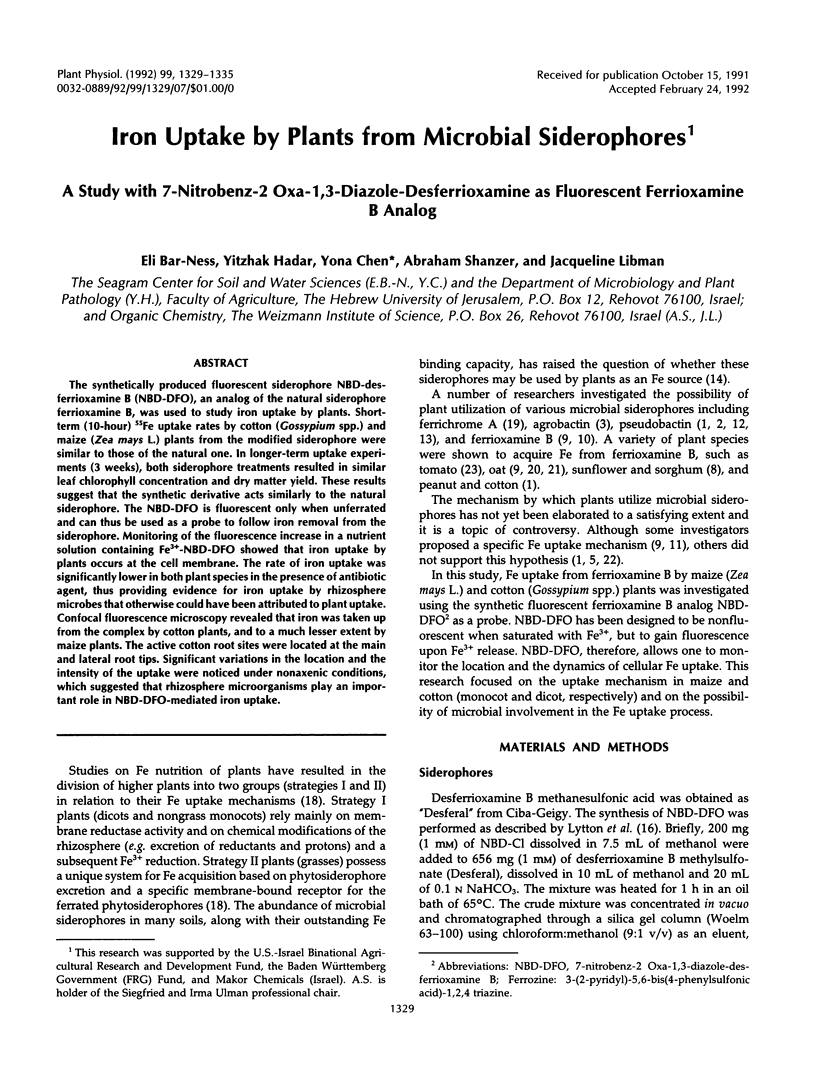
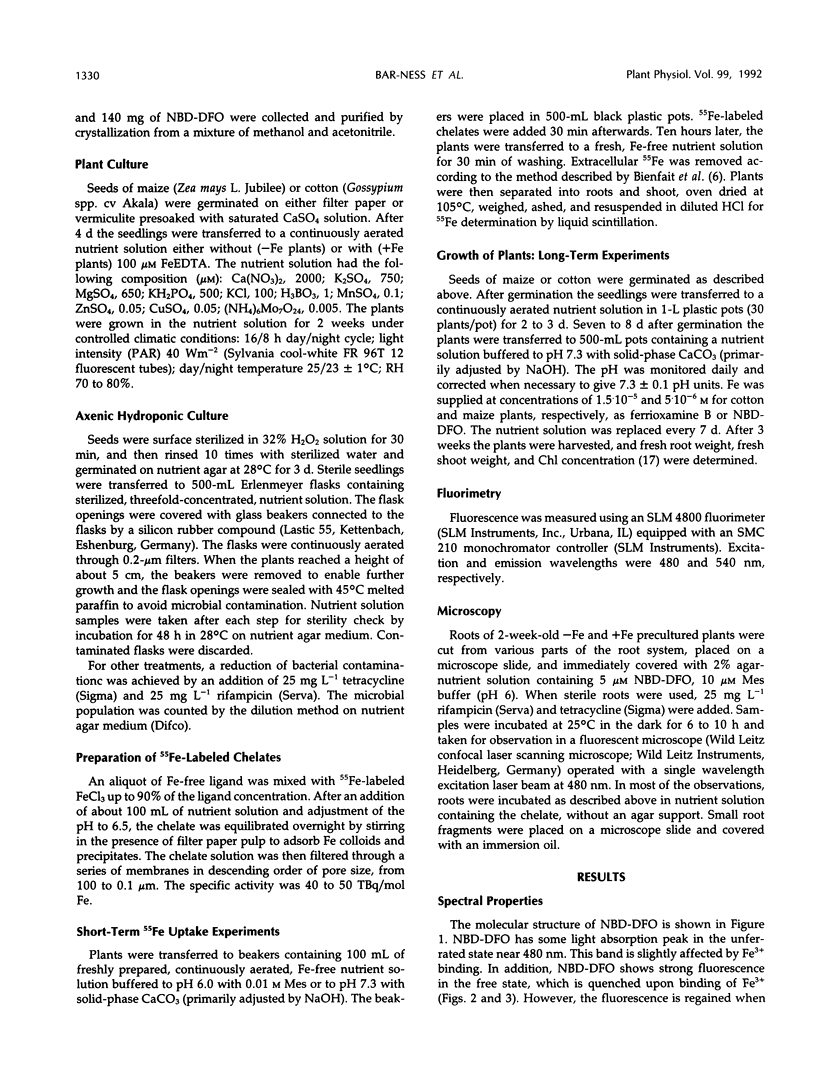
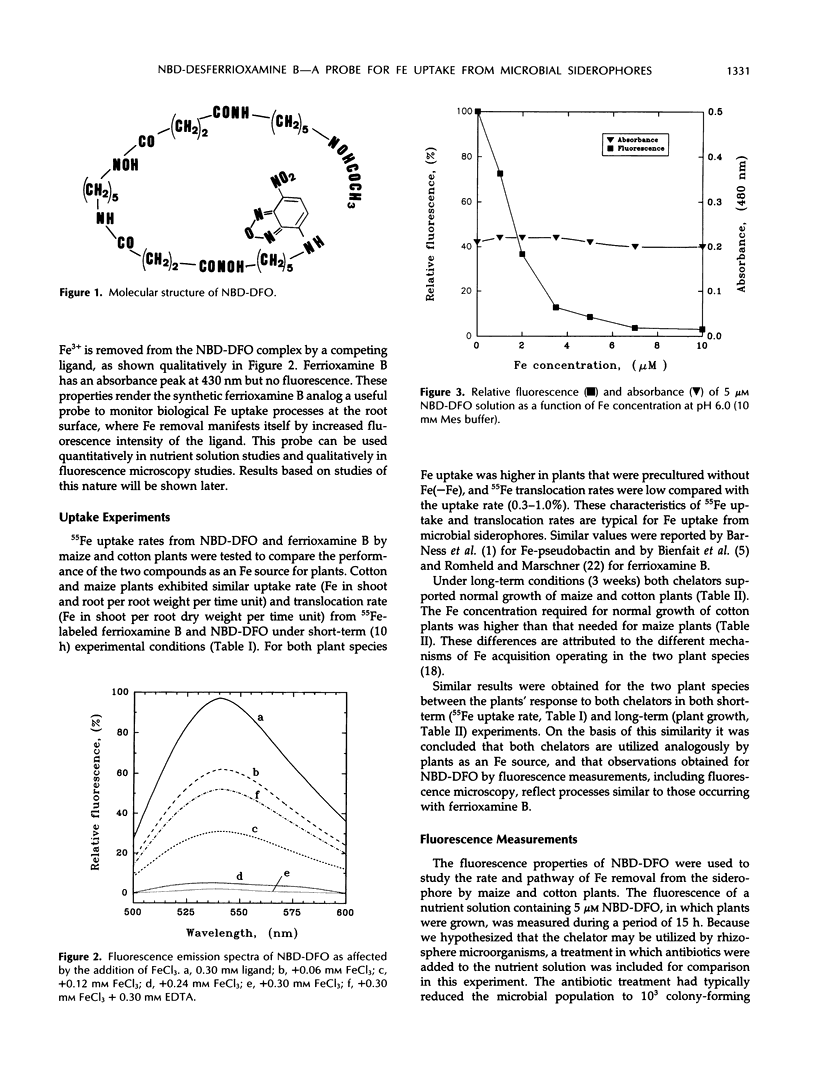
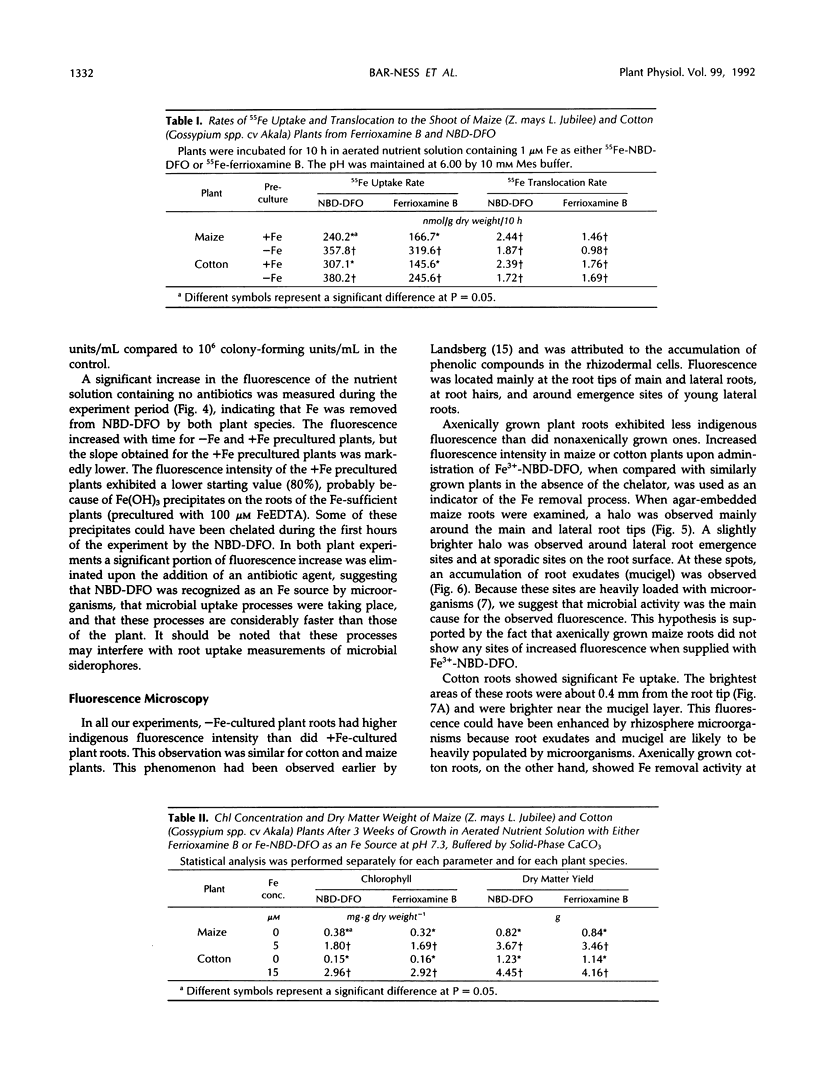
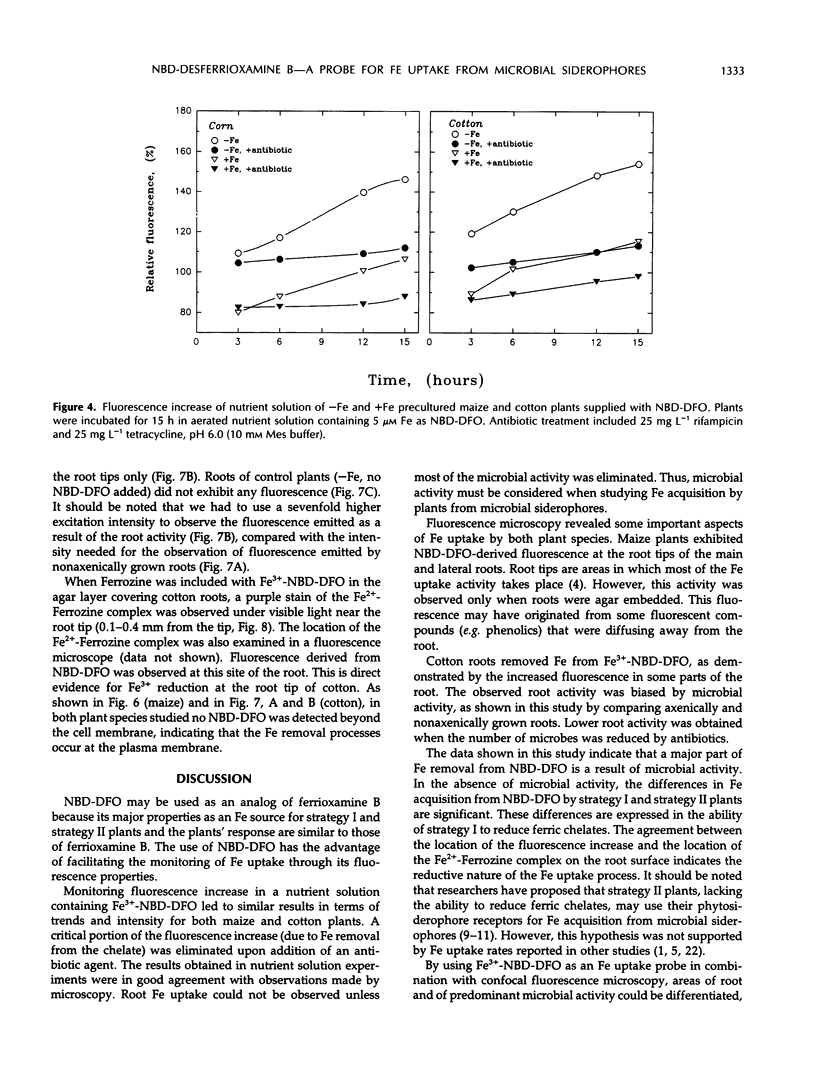
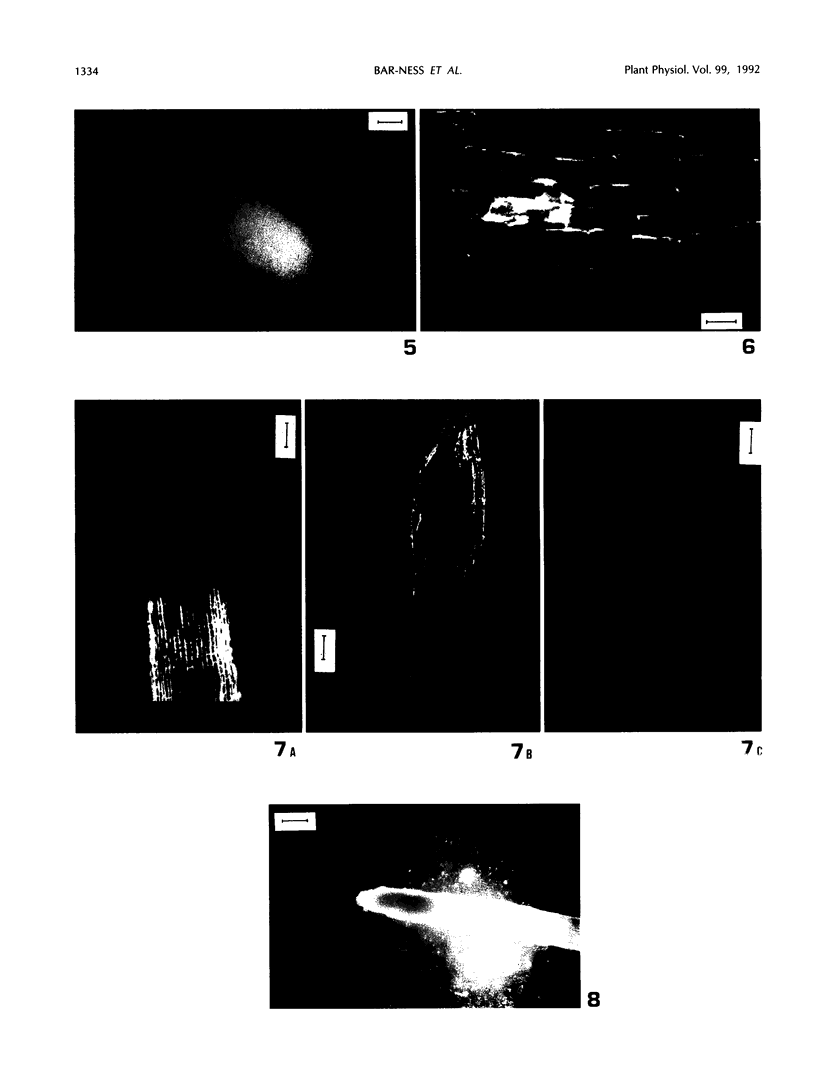
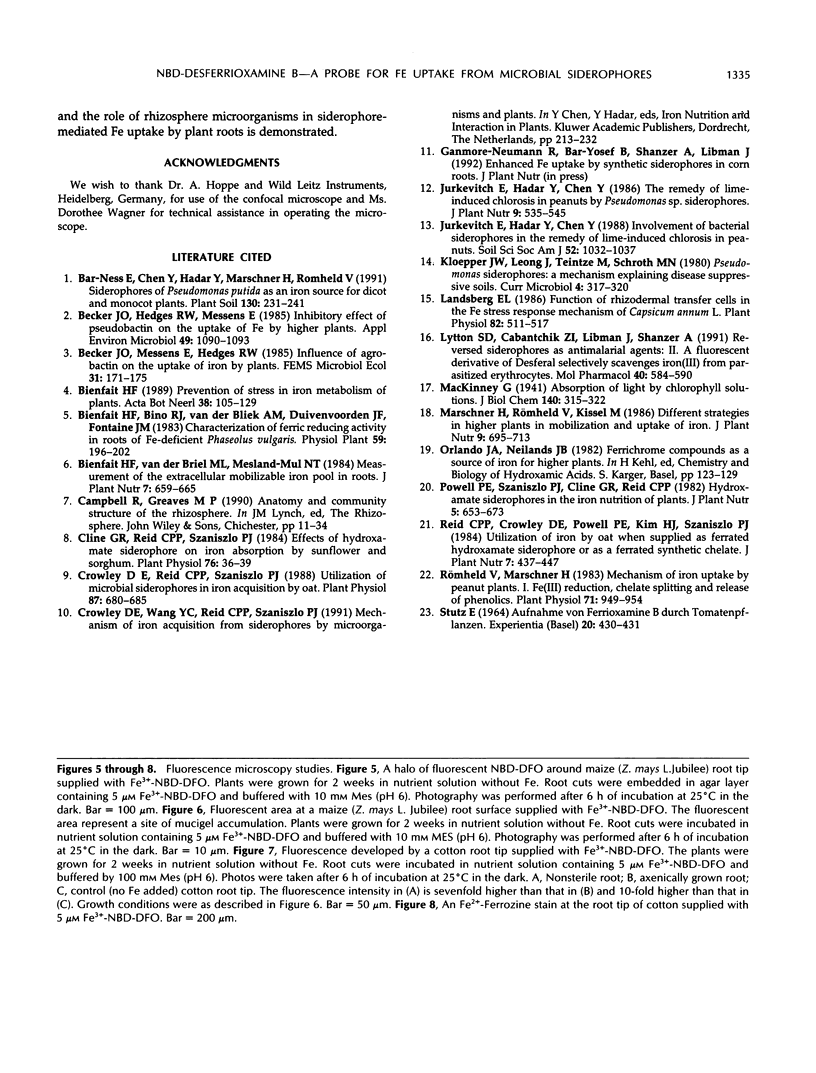
Images in this article
Selected References
These references are in PubMed. This may not be the complete list of references from this article.
- Becker J. O., Hedges R. W., Messens E. Inhibitory effect of pseudobactin on the uptake of iron by higher plants. Appl Environ Microbiol. 1985 May;49(5):1090–1093. doi: 10.1128/aem.49.5.1090-1093.1985. [DOI] [PMC free article] [PubMed] [Google Scholar]
- Cline G. R., Reid C. P., Powell P. E., Szaniszlo P. J. Effects of a hydroxamate siderophore on iron absorption by sunflower and sorghum. Plant Physiol. 1984 Sep;76(1):36–39. doi: 10.1104/pp.76.1.36. [DOI] [PMC free article] [PubMed] [Google Scholar]
- Crowley D. E., Reid C. P., Szaniszlo P. J. Utilization of microbial siderophores in iron acquisition by oat. Plant Physiol. 1988 Jul;87(3):680–685. doi: 10.1104/pp.87.3.680. [DOI] [PMC free article] [PubMed] [Google Scholar]
- Landsberg E. C. Function of Rhizodermal Transfer Cells in the Fe Stress Response Mechanism of Capsicum annuum L. Plant Physiol. 1986 Oct;82(2):511–517. doi: 10.1104/pp.82.2.511. [DOI] [PMC free article] [PubMed] [Google Scholar]
- Lytton S. D., Cabantchik Z. I., Libman J., Shanzer A. Reversed siderophores as antimalarial agents. II. Selective scavenging of Fe(III) from parasitized erythrocytes by a fluorescent derivative of desferal. Mol Pharmacol. 1991 Oct;40(4):584–590. [PubMed] [Google Scholar]
- Römheld V., Marschner H. Mechanism of iron uptake by peanut plants : I. Fe reduction, chelate splitting, and release of phenolics. Plant Physiol. 1983 Apr;71(4):949–954. doi: 10.1104/pp.71.4.949. [DOI] [PMC free article] [PubMed] [Google Scholar]
- Stutz E. Aufnahme von Ferrioxamin B durch Tomatenpflanzen. Experientia. 1964 Aug 15;20(8):430–431. doi: 10.1007/BF02152129. [DOI] [PubMed] [Google Scholar]






